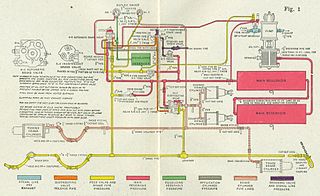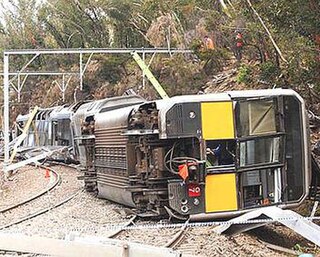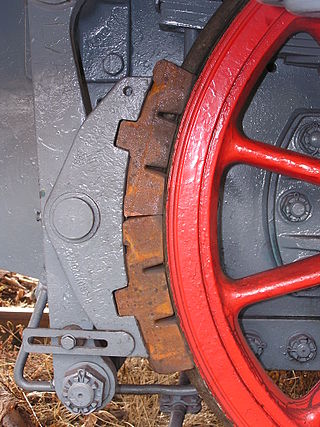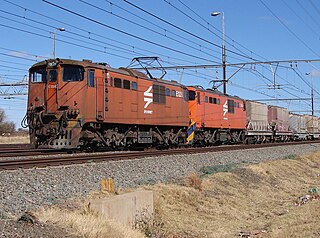
Pearson's Coupling was a safety relevant improvement for connecting the hoses of the Westinghouse Air Brake Company between railway carriages.

Pearson's Coupling was a safety relevant improvement for connecting the hoses of the Westinghouse Air Brake Company between railway carriages.
If a train was accidentally divided, the drawing apart of the hose pipes would cause the brakes to be applied on both sections of the severed train. However, in shunting operations, it was necessary to have an arrangement by which the carriages may be disconnected when required, without the application of the brakes. Thus, a train-cock was installed at each end of the carriage where the hose-pipes were attached. If the hose-pipes were disconnected, and the train-cocks left open, the brakes were applied throughout the train. Therefore, train-cocks had to be provided. [1]
The not infrequent forgetfulness of a shunter to open the train-cocks after coupling-up the hose-pipes has caused accidents in the past. A further risk in connection with these cocks lied in the fact that they could be tampered with by passengers. Out of eleven accidents in New Zealand, eight have been the result of somebody's negligence in leaving train-cocks closed. [1]
In Pearson's invention the cocks are necessarily closed and the levers engaged by the lugs, before the heads could be coupled together. The action of turning the heads upon one another, while the levers were engaged by the lugs caused the cocks to open, because the ports of the plugs registered with the ports in the cocks, leaving the brakes in a condition ready to be applied. The heads could not be uncoupled in the ordinary way without the operations being reversed and the cocks left open. If the heads were accidentally pulled apart, as by the severance of a train, the cocks remained open, and the brakes were thereby applied. [1]

A railway air brake is a railway brake power braking system with compressed air as the operating medium. Modern trains rely upon a fail-safe air brake system that is based upon a design patented by George Westinghouse on April 13, 1869. The Westinghouse Air Brake Company was subsequently organized to manufacture and sell Westinghouse's invention. In various forms, it has been nearly universally adopted.
The Armagh rail disaster happened on 12 June 1889 near Armagh, County Armagh, in Ireland, when a crowded Sunday school excursion train had to negotiate a steep incline; the steam locomotive was unable to complete the climb and the train stalled. The train crew decided to divide the train and take forward the front portion, leaving the rear portion on the running line. The rear portion was inadequately braked and ran back down the gradient, colliding with a following train.

The vacuum brake is a braking system employed on trains and introduced in the mid-1860s. A variant, the automatic vacuum brake system, became almost universal in British train equipment and in countries influenced by British practice. Vacuum brakes also enjoyed a brief period of adoption in the United States, primarily on narrow-gauge railroads. Their limitations caused them to be progressively superseded by compressed air systems starting in the United Kingdom from the 1970s onward. The vacuum brake system is now obsolete; it is not in large-scale usage anywhere in the world, other than in South Africa, largely supplanted by air brakes.

Multiple-unit train control, sometimes abbreviated to multiple-unit or MU, is a method of simultaneously controlling all the traction equipment in a train from a single location—whether it is a multiple unit comprising a number of self-powered passenger cars or a set of locomotives—with only a control signal transmitted to each unit. This contrasts with arrangements where electric motors in different units are connected directly to the power supply switched by a single control mechanism, thus requiring the full traction power to be transmitted through the train.
Rail transport terms are a form of technical terminology applied to railways. Although many terms are uniform across different nations and companies, they are by no means universal, with differences often originating from parallel development of rail transport systems in different parts of the world, and in the national origins of the engineers and managers who built the inaugural rail infrastructure. An example is the term railroad, used in North America, and railway, generally used in English-speaking countries outside North America and by the International Union of Railways. In English-speaking countries outside the United Kingdom, a mixture of US and UK terms may exist.

On trains, the expression emergency brake has several meanings:

Main components found on a typical steam locomotive include:

The Waterfall rail accident was a train accident that occurred on 31 January 2003 near Waterfall, New South Wales, Australia. The train derailed, killing seven people aboard, including the train driver. The accident is famously remembered by systems engineers due to the poorly designed safety systems.

A coupling or coupler is a mechanism, typically located at each end of a rail vehicle, that connects them together to form a train. The equipment that connects the couplers to the vehicles is the draft gear or draw gear, which must absorb the stresses of the coupling and the acceleration of the train.

A railway brake is a type of brake used on the cars of railway trains to enable deceleration, control acceleration (downhill) or to keep them immobile when parked. While the basic principle is similar to that on road vehicle usage, operational features are more complex because of the need to control multiple linked carriages and to be effective on vehicles left without a prime mover. Clasp brakes are one type of brakes historically used on trains.
The Charfield railway disaster was a fatal train crash which occurred on 13 October 1928 in the village of Charfield in the English county of Gloucestershire. The London, Midland and Scottish Railway (LMS) Leeds to Bristol night mail train failed to stop at the signals protecting the down refuge siding at Charfield railway station. The weather was misty, but there was not a sufficiently thick fog for the signalman at Charfield to employ fog signalmen. A freight train was in the process of being shunted from the down main line to the siding, and another train of empty goods wagons was passing through the station from the Bristol (up) direction.
Type H Tightlock couplers are a variety of Janney coupler, typically used on North American mainline passenger rail cars. They have mechanical features that reduce slack in normal operation and prevent telescoping in derailments, yet remain compatible with other Janney types used by North American freight railroads.

Mechanical railway signalling installations rely on lever frames for their operation to interlock the signals, track locks and points to allow the safe operation of trains in the area the signals control. Usually located in the signal box, the levers are operated either by the signalman or the pointsman.
The Murulla rail accident involved the collision of the Sydney-bound Northern Mail with runaway goods wagons near Murrurundi, in the Upper Hunter Valley on 13 September 1926; 26 persons died. A goods train had become divided and the attempts of the train crew to reunite the portions resulted in 12 vehicles running away down a steep gradient, and colliding with the approaching mail train. This was the worst accident on the New South Wales rail network until the Granville railway disaster in 1977.
Electronically controlled pneumatic brakes are a type of railway braking systems.
The Chenzhou train collision occurred on June 29, 2009, at Chenzhou railway station in Chenzhou, Hunan province, China, when two passenger trains collided, leaving at least three people dead and 63 injured. The crash occurred at 02:34 local time, between express trains numbered K9017 and K9063. The investigation determined that the accident was caused by a worker failing to remove a dust plug on a brake line of a newly manufactured carriage, causing the K9017 train to lose braking power on most of its carriages when the dust plug blocked the air brake hose.

The Round Oak railway accident happened on 23 August 1858 between Brettell Lane and Round Oak railway stations, on the Oxford, Worcester and Wolverhampton Railway. The breakage of a defective coupling caused seventeen coaches and one brake van, containing about 450 passengers, of an excursion train to run backwards down the steep gradient between the stations, colliding with a following second portion of the excursion. 14 passengers were killed and 50 injured in the disaster. In the words of the Board of Trade accident inspector, Captain H. W. Tyler, it was at the time "decidedly the worst railway accident that has ever occurred in this country".
The Rimutaka incline railway line has had several accidents as the result of strong cross winds. On two occasions passenger trains were derailed by them. The first in 1880 resulting in four deaths, and the second in 1936 resulting in only injuries.

The South African Railways Class 6E1, Series 1 of 1969 was an electric locomotive.
Buffers and chain couplers are the de facto International Union of Railways (UIC) standard railway coupling used in the EU and UK, and on some surviving former colonial railways, such as in South America and India, on older rolling stock. Buffers and chain couplers are an assembly of several devices: buffers, hooks and links, or turnbuckle screws.